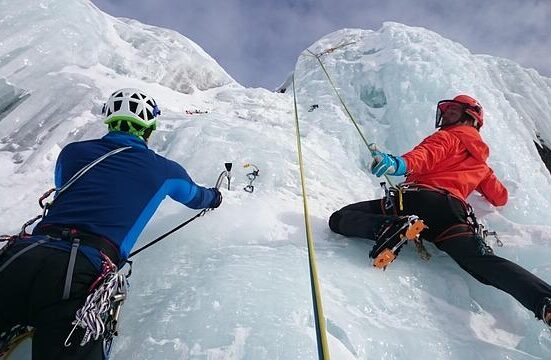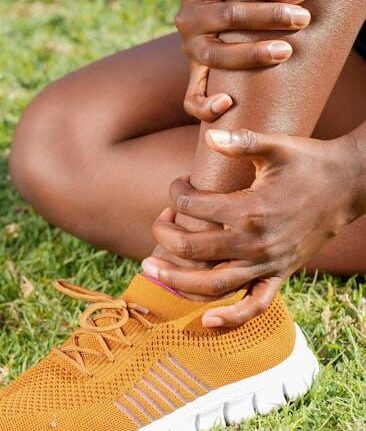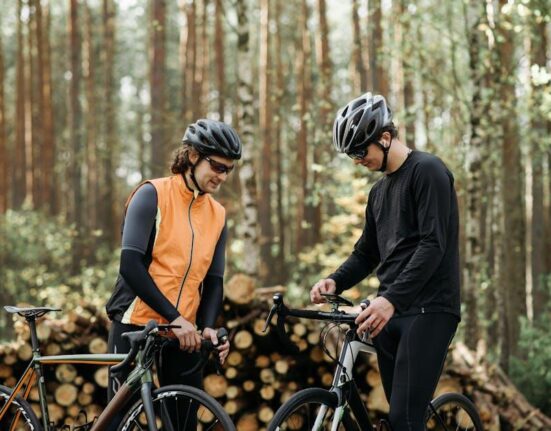As the world awakens to the pressing need for sustainable living, the outdoor sportswear industry is embracing an eco-friendly revolution that harmonizes adventure with environmental stewardship. In 2025, a new wave of brands is stepping into the spotlight, blending innovative materials and production methods with a commitment to preserving our planet. From breathable jackets made from recycled plastics to performance leggings crafted from organic cotton, today’s eco-conscious athlete has a plethora of stylish and functional options at their fingertips. Join us on a journey through the best eco-friendly outdoor sportswear brands of 2025, where functionality meets sustainability, allowing you to explore the grate outdoors while treading lightly on the Earth. Weather you’re scaling mountains, jogging through forests, or simply enjoying a serene hike, these brands are leading the charge towards a greener future for outdoor enthusiasts everywhere.
The Rise of Sustainable Innovation in Outdoor Sportswear
The wave of consciousness surrounding environmental issues has triggered a remarkable shift in the outdoor sportswear industry.Brands are striving to redefine their purpose by integrating sustainable practices into their production processes. this includes prioritizing materials that are recycled, organic, or biodegradable, effectively minimizing the ecological footprint often associated with outdoor apparel. These innovations not only enhance the performance and durability of sportswear but also appeal to a growing consumer base that values eco-friendliness. As outdoor enthusiasts become more aware of their purchasing power, brands are pushing the boundaries of customary manufacturing, seeking alternatives that resonate with the ethos of sustainability.
Several trailblazing companies now lead the market with commendable initiatives aimed at environmental preservation. The focus is on innovation that doesn’t compromise style or performance, proving that sustainability and high-quality outdoor gear can coexist. These brands are committed to obvious supply chains and responsible sourcing, encouraging consumers to make informed choices. Moreover, initiatives such as clothing repair programs, recycling facilities, and community-based environmental projects bolster their appeal, creating a sense of loyalty among users who share similar values.Here’s a glimpse of some pioneering brands making strides in sustainable outdoor sportswear:
| Brand | key Initiative |
|---|---|
| Patagonia | Worn Wear program promotes clothing repair and recycling. |
| Allbirds | Uses natural materials like eucalyptus and sugarcane for footwear. |
| Arc’teryx | Focuses on durable designs that reduce the need for recycling. |
| North Face | Eco-friendly materials through their Futurelight™ technology. |

material Matters: Fabrics That Make a Difference
When it comes to outdoor sportswear, the choice of fabric can significantly impact both performance and environmental sustainability. Today’s eco-friendly brands are increasingly focusing on innovative materials that not only enhance comfort and durability but also prioritize the planet’s health. Look for fabrics made from recycled plastics like Repreve, organic cotton, and biodegradable fibers like Tencel, which are designed to minimize waste and reduce carbon footprints. The use of moisture-wicking technology coupled with sustainable practices ensures that athletes can perform at their best without compromising their commitment to the surroundings.
Here are some standout materials used by leading eco-friendly sportswear brands:
- Recycled Polyester: Derived from plastic bottles, it saves landfill space and reduces ocean pollution.
- Hemp: A versatile and strong fabric that requires minimal water and pesticides to grow.
- Merino Wool: Naturally renewable and biodegradable, it offers excellent thermal regulation.
- Bamboo: A fast-growing resource that produces soft, breathable fabrics that are also anti-bacterial.
| Brand | Key Material | Sustainability Focus |
|---|---|---|
| Patagonia | Recycled Polyester | Fair Trade Certified |
| VAUDE | Hemp | Climate Neutral |
| Icebreaker | Merino Wool | Animal Welfare |
| Seea | Bamboo | Women Empowerment |

The Challenge of Ethical Manufacturing Practices
The landscape of outdoor sportswear is evolving, but the journey towards sustainable and ethical manufacturing practices is fraught with challenges. As brands strive to meet growing consumer demand for eco-conscious products,they often grapple with the complexity of their supply chains. The transparency in sourcing materials, fair labor practices, and reducing carbon footprints are just a few of the hurdles brands face. Without proper monitoring, it can be tempting for companies to cut corners, resulting in practices that undermine their sustainability pledges.
Furthermore, the variability of regulations across different regions poses another layer of complexity. Companies must navigate a mosaic of standards and certifications that can affect their credibility. In addition, consumer awareness plays a significant role; brands that don’t prioritize ethical manufacturing may find themselves facing backlash from informed customers. To tackle these issues effectively, brands increasingly focus on collaboration within the industry, engaging in initiatives aimed at promoting sustainable practices, such as:
- Responsible sourcing of raw materials
- Investment in renewable energy
- Certification through recognized eco-labels
- Empowerment of workers in the production chain

Top Brands Leading the Charge for Eco-Conscious Athletes
As sustainability gains traction in the athletic community, numerous brands are stepping up to the challenge of creating eco-conscious sportswear. These brands are not only focused on performance but also on the planet, using organic materials, recycled fabrics, and innovative production methods to minimize their environmental footprint. Some of the spotlighted brands include:
- Patagonia – Renowned for its commitment to environmental responsibility,offering durable gear made from recycled materials.
- Adidas – Continuously pushing the envelope with their Parley collection, utilizing ocean plastic in the production of athletic wear.
- Allbirds – Famous for their eco-friendly footwear, they’re expanding into activewear with a focus on sustainable wool and eucalyptus fibers.
- REI Co-op – Offers a wide range of sustainable outdoor gear, emphasizing the use of recycled and responsibly-sourced materials.
These leading brands not only provide athletes with high-quality gear but also embody a philosophy that champions environmental stewardship. Additionally, some brands have taken it a step further by implementing sustainable practices in their supply chains. The following table highlights a few notable initiatives:
| Brand | Initiative | Year Launched |
|---|---|---|
| Patagonia | Worn Wear – Gear repair and recycling program | 2013 |
| Adidas | End Plastic Waste – Utilizing ocean plastic | 2015 |
| Allbirds | Carbon Neutral Certification for products | 2020 |
| REI co-op | 100% Renewable Energy in Stores | 2020 |
In Summary
As we step into 2025, the intersection of outdoor adventure and sustainable living has never been more vibrant. The brands highlighted in this article not only redefine our approach to activewear but also demonstrate a profound commitment to preserving the planet. From innovative materials that minimize environmental impact to ethical production practices that uplift communities, these eco-friendly outdoor sportswear companies are gearing us up for our next adventures while treading lightly on the Earth.
Choosing eco-conscious gear is more than just a trend; it’s a lifestyle that embraces not only the thrill of the outdoors but also the responsibility we have towards our environment. as you explore trails, mountains, and waterways in the upcoming year, remember that the choices you make today can lead to a more sustainable tomorrow.
So, whether you’re scaling peaks, traversing forests, or simply enjoying a day in the park, you can do so with the reassurance that your gear echoes your values. Together, let’s celebrate a future where outdoor exploration and environmental stewardship go hand in hand. Happy adventuring!














Leave feedback about this